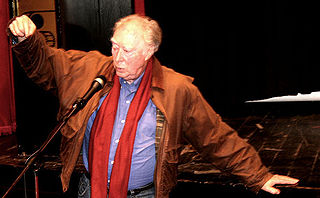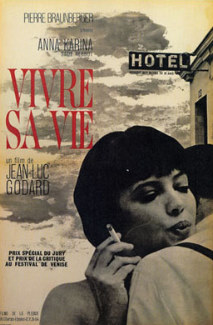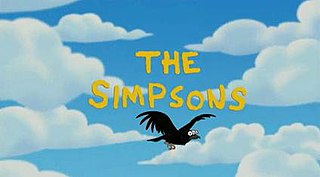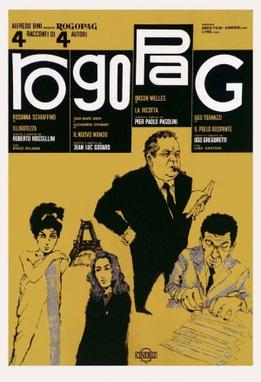Related Research Articles

Roger Wolcott Sperry was an American neuropsychologist, neurobiologist, cognitive neuroscientist, and Nobel laureate who, together with David Hunter Hubel and Torsten Nils Wiesel, won the 1981 Nobel Prize in Physiology and Medicine for his work with split-brain research. A Review of General Psychology survey, published in 2002, ranked Sperry as the 44th most cited psychologist of the 20th century.

X2 is a 2003 American superhero film directed by Bryan Singer and written by Michael Dougherty, Dan Harris and David Hayter, from a story by Singer, Hayter and Zak Penn. The film is based on the X-Men superhero team appearing in Marvel Comics. It is the sequel to X-Men (2000), as well as the second installment in the X-Men film series, and features an ensemble cast including Patrick Stewart, Hugh Jackman, Ian McKellen, Halle Berry, Famke Janssen, James Marsden, Rebecca Romijn-Stamos, Brian Cox, Alan Cumming, Bruce Davison, Shawn Ashmore, Aaron Stanford, Kelly Hu, and Anna Paquin. The plot, inspired by the graphic novel God Loves, Man Kills, concerns the genocidal Colonel William Stryker leading an assault on Professor Xavier's school to build his own version of Xavier's mutant-tracking computer, Cerebro, in order to destroy every mutant on Earth and to save the human race from them, forcing the X-Men to team up with the Brotherhood of Mutants to stop Stryker and save the mutant race.

Split-brain or callosal syndrome is a type of disconnection syndrome when the corpus callosum connecting the two hemispheres of the brain is severed to some degree. It is an association of symptoms produced by disruption of, or interference with, the connection between the hemispheres of the brain. The surgical operation to produce this condition involves transection of the corpus callosum, and is usually a last resort to treat refractory epilepsy. Initially, partial callosotomies are performed; if this operation does not succeed, a complete callosotomy is performed to mitigate the risk of accidental physical injury by reducing the severity and violence of epileptic seizures. Before using callosotomies, epilepsy is instead treated through pharmaceutical means. After surgery, neuropsychological assessments are often performed.

Michael James Aleck Snow was a Canadian artist who worked in a range of media including film, installation, sculpture, photography, and music. His best-known films are Wavelength (1967) and La Région Centrale (1971), with the former regarded as a milestone in avant-garde cinema.

The longitudinal fissure is the deep groove that separates the two cerebral hemispheres of the vertebrate brain. Lying within it is a continuation of the dura mater called the falx cerebri. The inner surfaces of the two hemispheres are convoluted by gyri and sulci just as is the outer surface of the brain.

Vivre sa vie is a 1962 French New Wave drama film written and directed by Jean-Luc Godard. The film was released in the United States as My Life to Live and in the United Kingdom as It's My Life.

Saturn 3 is a 1980 British science fiction film produced and directed by Stanley Donen, and starring Farrah Fawcett, Kirk Douglas and Harvey Keitel. The screenplay was written by Martin Amis, from a story by John Barry. Though a British production, made by Lew Grade's ITC Entertainment and shot at Shepperton Studios, the film has an American cast and director.

The lateral ventricles are the two largest ventricles of the brain and contain cerebrospinal fluid. Each cerebral hemisphere contains a lateral ventricle, known as the left or right lateral ventricle, respectively.
Agenesis of the corpus callosum (ACC) is a rare birth defect in which there is a complete or partial absence of the corpus callosum. It occurs when the development of the corpus callosum, the band of white matter connecting the two hemispheres in the brain, in the embryo is disrupted. The result of this is that the fibers that would otherwise form the corpus callosum are instead longitudinally oriented along the ipsilateral ventricular wall and form structures called Probst bundles.

The brain of Albert Einstein has been a subject of much research and speculation. Albert Einstein's brain was removed within seven and a half hours of his death. His apparent regularities or irregularities in the brain have been used to support various ideas about correlations in neuroanatomy with general or mathematical intelligence. Studies have suggested an increased number of glial cells in Einstein's brain.

The anterior commissure is a white matter tract connecting the two temporal lobes of the cerebral hemispheres across the midline, and placed in front of the columns of the fornix. In all but five species of mammal the great majority of fibers connecting the two hemispheres travel through the corpus callosum, which in humans and all non-monotremes is more than 10 times larger than the anterior commissure. Other routes of communication pass through the hippocampal commissure or, indirectly, via subcortical connections. Nevertheless, the anterior commissure is a significant pathway that can be clearly distinguished in the brains of all mammals.

Garbo Talks is a 1984 American comedy-drama film directed by Sidney Lumet and starring Anne Bancroft, Ron Silver, and Carrie Fisher, with an uncredited appearance by Betty Comden as Greta Garbo.

Darna Zaroori Hai is a 2006 Indian Hindi-language anthology horror film produced by Ram Gopal Varma. The film is a sequel to Darna Mana Hai. It stars a host of Bollywood actors including Amitabh Bachchan, Anil Kapoor, Sunil Shetty, Riteish Deshmukh, Bipasha Basu, Randeep Hooda, Arjun Rampal, Mallika Sherawat, Sonali Kulkarni, Rajpal Yadav and more. The film was archived at the New York Institute of Technology, as part of the film course.

The Simpsonsopening sequence is the title sequence of the American animated television series The Simpsons. It is accompanied by "The Simpsons Theme". The first episode to use this introduction was the series' second episode "Bart the Genius".
The empathising–systemising (E–S) theory is a controversial theory on the psychological basis of autism and male–female neurological differences originally put forward by English clinical psychologist Simon Baron-Cohen. It classifies individuals based on abilities in empathic thinking (E) and systematic thinking (S). It measures skills using an Empathy Quotient (EQ) and Systemising Quotient (SQ) and attempts to explain the social and communication symptoms in autism spectrum disorders as deficits and delays in empathy combined with intact or superior systemising.

Black Lizard is a 1968 Japanese film directed by Kinji Fukasaku. The film is based on a play by Yukio Mishima which in turn is based on a novel by Rampo Edogawa. The play had previously been adapted to film in 1962 by director Umetsugu Inoue.

Ro.Go.Pa.G. is a 1963 film consisting of four segments, each written and directed by a different director. These include the French director Jean-Luc Godard and the Italian directors Ugo Gregoretti, Pier Paolo Pasolini and Roberto Rossellini.
Dual consciousness is a hypothesis or concept in neuroscience. It is proposed that it is possible that a person may develop two separate conscious entities within their one brain after undergoing a corpus callosotomy. The idea first began circulating in the neuroscience community after some split-brain patients exhibited alien hand syndrome (AHS), which led some scientists to believe that there must be two separate consciousnesses within the brain's left and right hemispheres in competition with one another once the corpus callosum is severed.
Sandra Freedman Witelson is a Canadian neuroscientist best known for her analysis of specimens from Albert Einstein's brain, as well as exploring anatomic and functional differences regarding male and female brains, handedness, and sexual orientation. She and her colleagues maintain the world's largest collection of "cognitively normal" brains at McMaster University in Hamilton, Ontario.

I'm Thinking of Ending Things is a 2020 American surrealist psychological thriller film written and directed by Charlie Kaufman. It is an adaptation of the 2016 novel of the same name by Iain Reid. The plot follows a young woman who goes on a trip with her boyfriend to meet his parents. Throughout the film, the main narrative is intercut with footage of a school janitor going to work, with both stories intersecting by the third act.
References
- ↑ Peranson, Mark (27 August 2002). "Into the Snow Zone". The Village Voice.
- ↑ Goodard, Peter (8 March 2002). "Snow Falling on Cinema". Toronto Star. ProQuest 438418293.